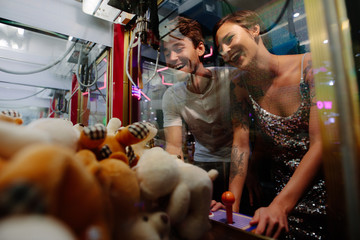
Arcade games are making a strong comeback, largely driven by nostalgia. For many gamers, the arcade represents a cherished part of their childhood—a place where they spent hours immersed in simple, yet highly addictive games. As the world becomes more digital and technology advances, there’s a growing desire to reconnect with those simpler times. Retro gaming offers a comforting escape, with the pixelated graphics and straightforward mechanics evoking a sense of nostalgia that appeals to both older gamers who remember the heyday of arcades and younger players curious about gaming history.
In recent years, arcade bars and gaming lounges have been popping up in cities around the world, blending the charm of traditional arcades with the social atmosphere of modern entertainment venues. These spaces offer a perfect mix of nostalgia and novelty, where patrons can enjoy their favorite classic games while socializing with friends over drinks. The appeal lies not only in the games but in the communal experience of gathering with others, much like the original arcades. These modern twists on the classic arcade concept make it easy for people to rediscover the joy of gaming in a social setting, driving the resurgence of arcade culture.
Arcade games often emphasize competition, quick reflexes, and skill, making them highly engaging and rewarding for players. As the gaming world becomes saturated with complex, story-driven titles, arcade games stand out for their simplicity and accessibility. Players don’t need to invest hours into learning game mechanics or mastering complicated controls—arcade games are designed to be straightforward, yet challenging enough to keep players coming back for more. This makes them especially appealing in a time when quick, rewarding gaming experiences are increasingly valued, whether for a quick break or a longer session of gameplay.
While many arcade games have retro appeal, the integration of modern technology has helped revitalize the arcade scene. Virtual reality (VR), augmented reality (AR), and high-definition graphics are being introduced into the arcade environment, enhancing the experience with new levels of immersion. Games like Beat Saber in VR or the use of motion-sensing technology in dance games have brought the arcade into the 21st century. These advancements attract new players who may not have experienced the charm of traditional arcades but are drawn to the immersive, tech-savvy versions of arcade gaming.
At its core, arcade gaming has always been a social activity. From competing for the top score to teaming up for multiplayer challenges, arcades offer an environment where people can bond over shared experiences. In an age where many games are played solo or online, arcades offer a rare, tangible social experience. The resurgence of arcade games is not just about reliving the past but about reconnecting with others in a fun, interactive setting. With the rise of multiplayer competitions, tournaments, and game nights, arcade games are once again offering a place for players to come together, interact, and form lasting memories.